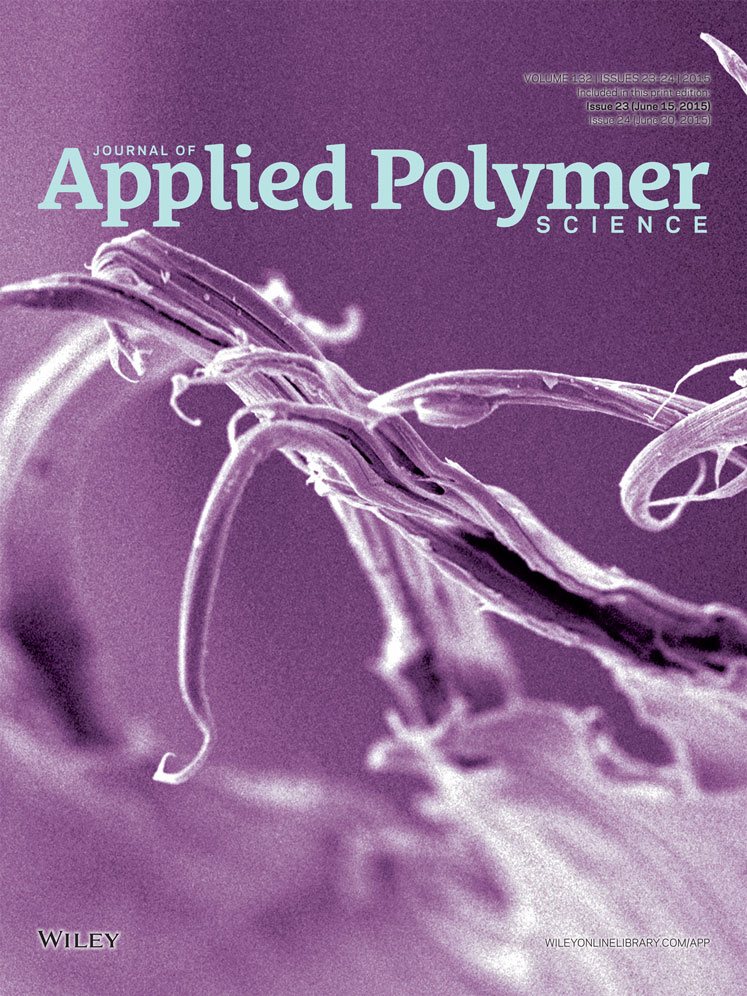Thermal and shape memory properties of cyanate/polybutadiene epoxy/polysebacic polyanhydride copolymer
ABSTRACT
A novel thermal-induced shape memory polymer was synthesized by copolymerization of a new kind of epoxy resin-polybutadiene epoxy (PBEP), bisphenol A-type cyanate ester (BACE), and polysebacic polyanhydride (PSPA) with different mass ratios. Fourier transform infrared spectroscopy (FTIR), bending test, dynamic mechanical analysis (DMA), and shape memory property were investigated systematically. It was found that the PSPA significantly enhanced the bending strength and flexural modulus. The DMA results showed that the glass transition temperature reduced with increasing content of PSPA. Furthermore, the shape memory tests proved that the copolymer possessed excellent shape memory properties. The shape recovery time decreased with increasing content of PSPA and temperature. The shape memory rate increased as the PSPA content increased. The shape recovery ratio decreased with increasing cycle times. © 2015 Wiley Periodicals, Inc. J. Appl. Polym. Sci. 2015, 132, 42045.




